- News
- Reviews
- Bikes
- Accessories
- Accessories - misc
- Computer mounts
- Bags
- Bar ends
- Bike bags & cases
- Bottle cages
- Bottles
- Cameras
- Car racks
- Child seats
- Computers
- Glasses
- GPS units
- Helmets
- Lights - front
- Lights - rear
- Lights - sets
- Locks
- Mirrors
- Mudguards
- Racks
- Pumps & CO2 inflators
- Puncture kits
- Reflectives
- Smart watches
- Stands and racks
- Trailers
- Clothing
- Components
- Bar tape & grips
- Bottom brackets
- Brake & gear cables
- Brake & STI levers
- Brake pads & spares
- Brakes
- Cassettes & freewheels
- Chains
- Chainsets & chainrings
- Derailleurs - front
- Derailleurs - rear
- Forks
- Gear levers & shifters
- Groupsets
- Handlebars & extensions
- Headsets
- Hubs
- Inner tubes
- Pedals
- Quick releases & skewers
- Saddles
- Seatposts
- Stems
- Wheels
- Tyres
- Health, fitness and nutrition
- Tools and workshop
- Miscellaneous
- Tubeless valves
- Buyers Guides
- Features
- Forum
- Recommends
- Podcast
TECH NEWS
First Ride: Trek Émonda SLR
Trek’s new Émonda road bike is very lightweight, extremely responsive and, more surprising, a comfortable ride too.
We first told you about the Émonda a couple of weeks ago but since then we’ve had so much to tell you about – what with the Tour de France and all – that we’ve not had time to tell you about the ride.
The lightest production road line ever
First, a brief recap of the story behind the Émonda (skip to The ride section if you already know it).
Trek boast that the Émonda is “the lightest production road line ever”. It comes in a whole load of different versions (15, to be precise, including four WSD – Women’s Specific Design – models) ranging from the £1,200 Émonda S 4 right up to the SLR 10 at £11,000. Yes, that’s £11,000.
These are based around three different framesets: the S, the SL (which, if bought as a bare frameset, is £1,350), and the SLR (£3,000). They’re all carbon, although different types of carbon.
The SLR is the top, World Tour level version, and the one that we got to ride ahead of the start of the Tour de France in Yorkshire.
Whereas the big bike brands have mostly been shouting about aerodynamics and integration over the past few years, Trek have unashamedly concentrated on cutting weight with the Émonda. They say that they have worked on the tube shapes and the laminate to produce “the most sophisticated tube optimisation ever”.
They reckon the SLR frame weighs 690g painted, a touch lighter than Cannondale’s SuperSix Evo. They also say that they have engineered those tubes so that each Émonda size feels and performs exactly the same.
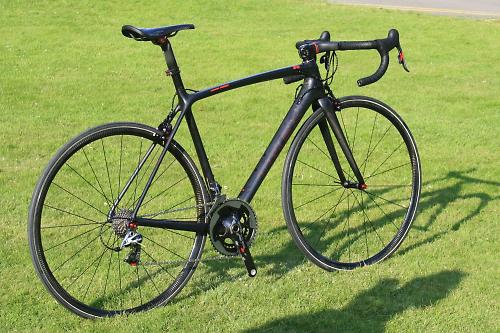
The headline-grabbing model is that SLR 10 that I mentioned before, built up with a SRAM Red 22 groupset, Tune wheels and saddle, a Bontrager XXX Integrated carbon bar/stem and Bontrager direct mount Speed Stop brakes. That one weighs an unbelievable 10.25lb (4.6kg). Well, ‘unbelievable’ were it not for the fact that we weighed it and found that figure to be accurate. Trek say this is the lightest production bike out there and we certainly don't know of any that are lighter.
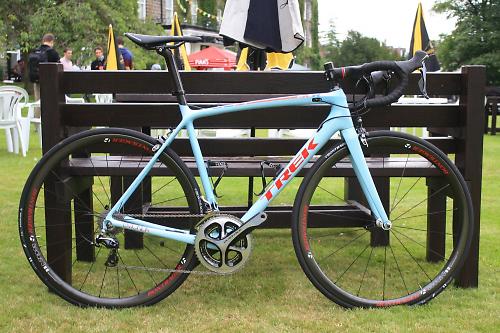
The geometry
Whereas the S and SL are both available in just Trek’s standard H2 geometry, the SLR comes in their more aggressive H1 (lower and more stretched) fit too.
The Émonda’s geometry is very similar to that of the existing Madone. Although the chainstays are a touch longer on the Émonda, the stack (the vertical distance between the centre of the bottom bracket and the top of the head tube) and reach (the horizontal distance between those two points) are virtually the same.
The Madone line-up, like the Domane endurance road bike line-up, will remain in the Trek range with the Émonda as another alternative. Trek see the Madone as the aero one, the Domane as the most comfortable one, and the Émonda as the lightest one.
Okay, that’s enough background – check out our original news report for more details – let’s get on with the ride.
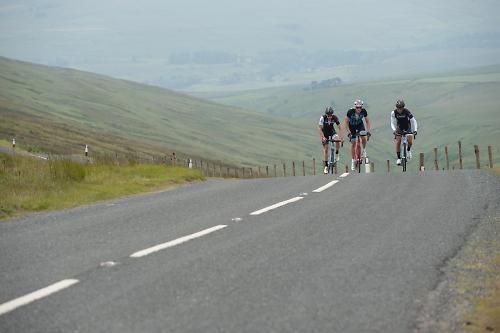
The ride
We got to ride the Émonda for 80 miles over part of the Stage One route of this year’s Tour de France, starting just before the big Buttertubs climb, a few days before the Grand Départ. Well, most of it was over the Tour de France route. We overshot a turning and added 15 or 20 unscheduled miles – “Okay, so you’re saying that the Tour isn’t coming through Richmond?” – but the point is that we got about four hours in the saddle including about 1,500m of climbing. That’s nowhere near enough for a full bike review, but it’s more than we typically get at a bike launch.
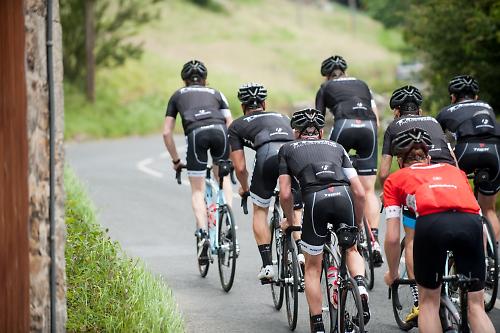
I was on the Émonda SLR 9 which would be, if it weren’t for the ridiculously high-end 10, the flagship model in the line-up. The SLR frame, as I said before, is the superlight 690g one. It’s made from Trek’s ‘Ultralight 700 Series OCLV carbon’ with an oversized BB90 bottom bracket and an E2 tapered (1 1/8in to 1 1/2in) head tube. The fork is full carbon right down to the dropouts.
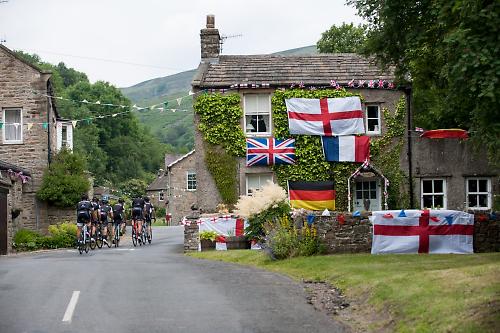
The SLR 9 is built up with a Shimano Dura-Ace Di2 electronic drivetrain and Dura-Ace direct mount brakes, Bontrager (Trek’s in-house brand) Aeolus 3 D3 carbon wheels and a Bontrager XXX carbon bar and stem. The saddle is Bontrager’s own too – a Paradigm XXX sitting on top of a Bontrager carbon seatmast cap.
This bike might not be as featherlight as the Émonda SLR 10 but it’s still extremely light at about 13.5lb (6.1kg) without pedals. Add your pedals and you’re still well below the UCI’s 6.8kg minimum weight limit for racing. That might not be relevant to you, but it shows just what sort of bike we’re talking about here.
It’s not going to surprise you much to learn that the Émonda is very light and reactive. My initial feeling is that it climbs as well as any bike I’ve ever ridden. We did about seven or eight miles to get the legs moving and then headed up Buttertubs Pass, used as a King of the Mountains climb in Stage One of the Tour later in the week. Whatever the gradient – and Buttertubs varies quite a bit; it’s not consistent – the Émonda responded readily to extra input.

I rode out of the saddle quite a bit on the steeper sections and didn’t feel any particular movement through the bottom bracket, despite the frame’s ultralight weight. The same was true at the front end despite having a lot of the fork steerer extending out of the head tube (I’d have removed a couple of spacers and shifted the bars down if I’d had a second ride). Bontrager’s XXX carbon bar and stem will have to take some of the credit for that too.
Heading down from Buttertubs is great fun. It’s fast and bendy, and the road dips steeply going into a couple of the corners. All-in-all, it’s a good test of a bike’s handling capabilities and, despite never having ridden Buttertubs before, I felt confident enough on the Émonda to push really hard and sling the bike fast into the bends knowing I’d end up exactly where I was aiming. Excellent brakes help there, of course, the direct mount Dura-Ace units fitted here providing the modulation and all-out bite that I needed to stay out of trouble. They're ultra-solid and if anything slightly out-perform standard Dura-Ace calliper brakes
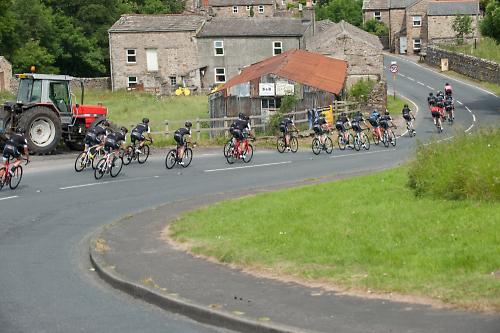
Down on the rolling road across the Dales, it’s simple to shepherd the Émonda over each little climb but what’s more surprising is that it feels very comfortable. Although the Émonda is a thoroughbred racehorse, at the end of four hours in the saddle I certainly didn’t feel like it had given me a kicking despite the relatively narrow (23mm) tyres fitted. I couldn’t tell you if I have to thank the frame for that, the carbon seatmast cap or the carbon-railed Bontrager Paradigm XXX saddle. Maybe it’s all of them working together. Whatever, I’m really keen to get an Émonda in for a proper test here on road.cc soon.
I’ve been a big fan of the high-end Madones over the past few years. I’ve never owned one but I’ve ridden several at launches and for reviews. My initial impression is that the Émonda is every bit as impressive.
Mat has been in cycling media since 1996, on titles including BikeRadar, Total Bike, Total Mountain Bike, What Mountain Bike and Mountain Biking UK, and he has been editor of 220 Triathlon and Cycling Plus. Mat has been road.cc technical editor for over a decade, testing bikes, fettling the latest kit, and trying out the most up-to-the-minute clothing. He has won his category in Ironman UK 70.3 and finished on the podium in both marathons he has run. Mat is a Cambridge graduate who did a post-grad in magazine journalism, and he is a winner of the Cycling Media Award for Specialist Online Writer. Now over 50, he's riding road and gravel bikes most days for fun and fitness rather than training for competitions.
Latest Comments
- festina 7 min 29 sec ago
I kinda like the look.
- Velo-drone 45 min 53 sec ago
I don't think it is peculiarly Dutch even. I've travelled all over Europe for work, and I'd say that the popularity of this style of bike is much...
- hawkinspeter 49 min 16 sec ago
They most certainly do "separate like that"....
- ROOTminus1 1 hour 41 min ago
Strong racing performances in an Olympic year should result in a marked increase in membership. ...
- nick h. 3 hours 32 min ago
Read it again. You seem to have missed what this is all about.
- Secret_squirrel 6 hours 34 min ago
Thanks Neil!
- slc 6 hours 40 min ago
All arguments I am hopeful to see validated, especially (a) and (b) combined....
- hawkinspeter 7 hours 14 min ago
Well, on Lundy the only predators are the humans, and they're far more likely to buy some farmed non-Soay lamb from the pub than try to chase a...
- mdavidford 7 hours 14 min ago
"Just a little bit off the sides"
- mdavidford 7 hours 16 min ago
Given that one of the Oxfordshire councillors took the time to drop into the comments section of the previous article on this story to deny, at...



































































Add new comment
14 comments
Save yer money and buy a second hand Pegoretti.
Obvs the next one will be Modena. After the Italian city. If it isn't taken already. It will have to be red
So we've had the Madone, then the Domane and now the Emonda, what's next in the Trek anagram naming sequence?
Hehe, you're right. Here's some more:
Mad One
A Demon
Man Ode
Moaned
Ad Omen...
Look, learning the alphabet is hard, mmmkay? We're doing the best we can!
Even my 2.0 Domane is really comfortable, but it is also heavy.
Since I use it for commuting and winter weekend riding, the weight is not much of a problem. But it is the thing that would put me off buying a more expensive version as my summer and good weather bike.
But that's an aluminium frame. And in the series noted by Trek as being the heaviest of the three.
I wonder if some of the weight saving tech will find its way to a Domane version? My best mate has (I can't remember exactly which) upper 4 series Domane and it is just ridiculously comfortable. It makes my 2009 Fuji Team Pro feel like a penny farthing.
The thing is that being able to make light bikes isn't new to us, to be fair. We just haven't done it in the past because we typically introduce things at race level, then have that trickle down. It's not hard to imagine a time very soon when the UCI will scrap the weight limit, so now was the right time to really test the potential of OCLV.
The IsoSpeed will always be a factor in the overall weight of the Domane, simply because there are bearings and a bushing in it that don't exist in non-IsoSpeed bikes. Is it possible to reduce the overall frame weight of the Domane? Of course. Is it the next logical direction to take that platform? Maybe. That probably depends on how people want to use that bike. For now, it's not a bike that we make with the intention of creating a superlight version. That bike is about high performance, with maximum comfort.
The takeaway from this is that we have a pattern of trying new things, and using other things in new ways. The product group is designing and engineering things for 2016 right now. They put 2014 design to rest 18 months ago. The fun is in trying to figure out what you'll see next, for example, where else could IsoSpeed turn up within the complete range of Trek bikes? Hmm...
Great to get a brand response - thanks. Wasn't enquiring out of anything but curiosity; I love my pal's Domane for comfort. I can drop a few kg off my own hide far more cheaply! My Fuji will see me through probably two more years and then I'll be looking at Project One, S-Works, or possibly Canyon if their amazing pricing is matched by their quality.
"Trek say this is the lightest production bike out there and we certainly know of any that are lighter."
I guess you mean you don't know of any that are lighter?
I'd prefer the sl9 to the sl10.
Not usually a fan of Trek, but good on 'em! Makes a change from reading about the amount of Watts that some 'scallop' or such-what can save you.
I like light & responsive, I like usable.
Disc brake version coming next year (had to be said )
)